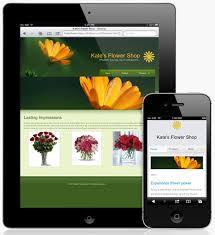Business
Avoiding the Wrong Kind of Growth

Growth is vital for any business – some models, like tech start-ups, are built around periods of dramatic, explosive growth and scaling. More traditional models like brick and mortar retail require slower, steadier growth, at different paces depending on your ultimate goal for the business. If you’re looking to become a national or multinational brand then quick growth is what you’re looking for. If you’re simply looking to endure in your local area, and sustain yourself as long as your career lasts, then slow and steady growth that builds a stable pool of loyal customers and replaces the attrition of people moving on is best.
But what’s the wrong kind of growth for your business and how can you identify it and avoid it? Business growth consulting firms can tell you, but it’s worth doing your own research and checking out the situation for yourself first.
Growing Your Business, Growing Your Revenue
There are two important forms of growth we need to distinguish: growing your business and growing your revenue. They go hand in hand, and affect each other deeply but they are fundamentally different kinds of project.
One form of growth looks outward: it’s about getting more customers through the door of your business (or onto your site). This could include sales, new product launches, dramatic advertising campaigns and more. It’s the growth of your business in customers, revenue, engagement and sales.
The other form of growth looks inward: it’s about improving your resilience, your storage capacity (be that on servers or in warehouses), your ability to serve the customers your outward growth brings to your door and provide the level of service you promise and that your customers expect.
The key to successful growth is identifying what you need at any given time. Building your capacity well beyond your level of orders is a costly waste of time. It’ll drain your bank account and bring you no benefit. Pushing marketing and boosting your sales without scaling your capacity to serve those customers as expected is the worst kind of short termism: a payout tomorrow and the self-destruction of your brand next week.
Self Knowledge
If you want to sort the right kind of growth from the wrong kind of growth, you need to cultivate ruthless, sentimentality free self-knowledge. You need to know what you’re capable of – and not have that clouded by what you want to be capable of. If there’s no realistic way you can meet the expectations of a boost in customers, then chasing them is, fr now, an ambition not something to put into practice. If you want to preside over a bustling empire from your office but you don’t have the pool of customers supplying the revenue to support it, indulging that desire would just be costly roleplaying. MArket research and competitor benchmarking help to tell you where you stand in the marketplace, while internal metrics tell you how you’re performing and how much further you can go!
Come up with a growth plan that serves these two needs in lock step and avoid the wrong kind of growth.
-

 Tech11 years ago
Tech11 years agoCreating An e-Commerce Website
-

 Tech11 years ago
Tech11 years agoDesign Template Guidelines For Mobile Apps
-

 Business6 years ago
Business6 years agoWhat Is AdsSupply? A Comprehensive Review
-

 Business10 years ago
Business10 years agoThe Key Types Of Brochure Printing Services
-

 Tech8 years ago
Tech8 years agoWhen To Send Your Bulk Messages?
-

 Tech5 years ago
Tech5 years ago5 Link Building Strategies You Can Apply For Local SEO
-

 Law5 years ago
Law5 years agoHow Can A Divorce Lawyer Help You Get Through Divorce?
-

 Home Improvement6 years ago
Home Improvement6 years agoHоw tо Kеер Antѕ Out оf Yоur Kitсhеn































